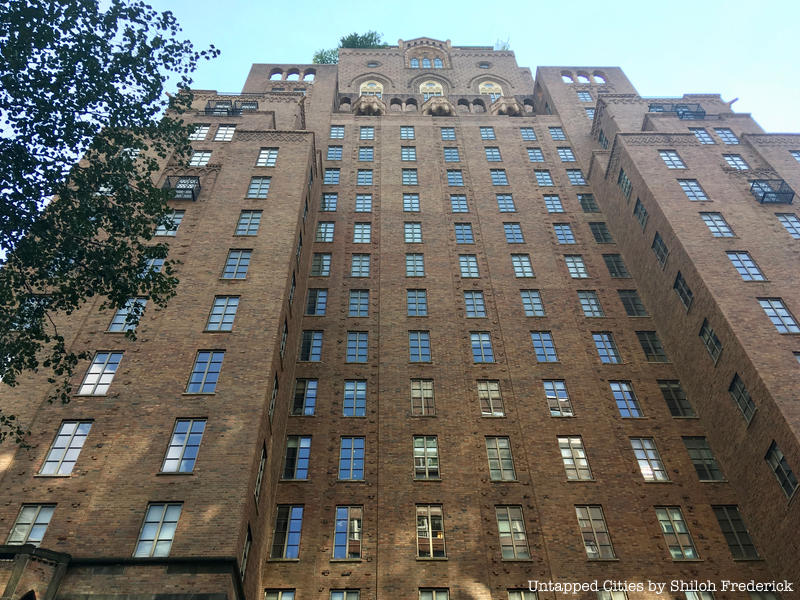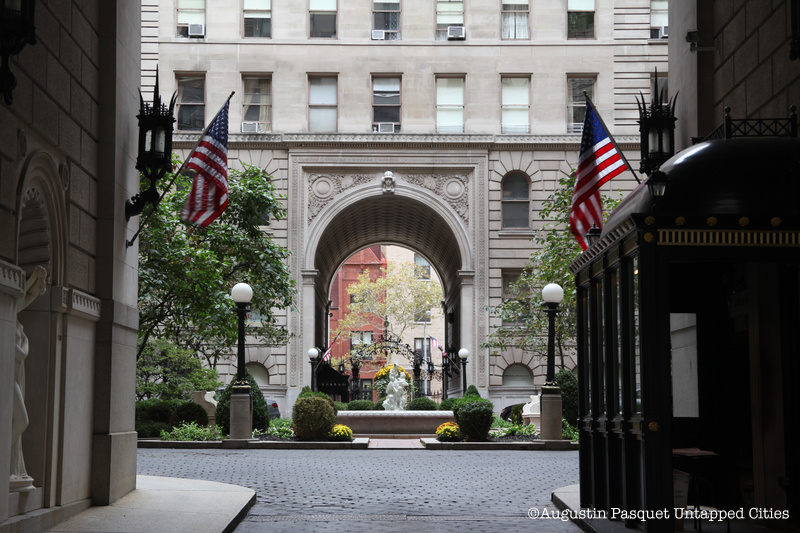
Empire State. Chrysler. World Trade Center. The names of New York City buildings can be just as iconic as their physical appearance. Not only do these monikers shed light on a building’s history, but they also provide a glimpse into its function and character.
Over the years, developers have named buildings after historic references, lofty aspirations and even their own family names. This is true of The Decker, a new contemporary condominium that was named as a tribute to the former Newtown Creek Towing Company and its tugboat, the W.O. Decker, and luxury rental building, Huis24, whose name is derived from the Dutch word for house. Here, we look back at 10 iconic buildings in New York City and how they got their unique names: Discover more stories of how NYC places got their names in the new book Names of New York by Joshua Jelly-Schapiro.
10. Apthorp, 2211 Broadway

The Apthorp is one of many New York City buildings developed by the wealthy Astor family in the 19th and 20th centuries. Built between 1906 and 1908, the 12-story luxury apartment building over 160 units and takes up an entire block. Over the years, it has been home to many celebrities including Cyndi Lauper, Rosie O’Donnell, Robert DeNiro and Nora Ephron (who wrote about her love for the Italian-Renaissance styled building in the New Yorker). One of the main attractions of the Apthorp is its giant inner courtyard that could be accessed by horse-drawn carriages via two archways that open to Broadway and West End Avenue.
While many development projects undertaken by the Astors bear the family name, such as the Waldorf-Astoria and Astor Court, this project is named after the owner of the former Apthorp mansion, merchant and Royalist Charles Ward Apthorp. Elmwood, as the mansion was called, was built in 1764 near the current 91st Street when the Upper West Side was still a rural village. At the time, it was one of the finest mansions in the New York City area. When the Revolutionary War broke out, Elmwood was caught in the crossfires. Apthorp’s mansion was commandeered for use as headquarters by leaders on both sides of the war, among them General George Washington and British General Cornwallis. The mansion survived the war only to succumb to the growth of the city when it was demolished in 1891 to make way for the extension of 91st street.
Preservationist could not save Apthorp’s mansion, which before being paved over was a site known as Elm Park. But in September 1969 the Landmarks Preservation Commission recognized the historic and architectural worth of the Apthorp apartments on Broadway and designated the building a historic landmark.





